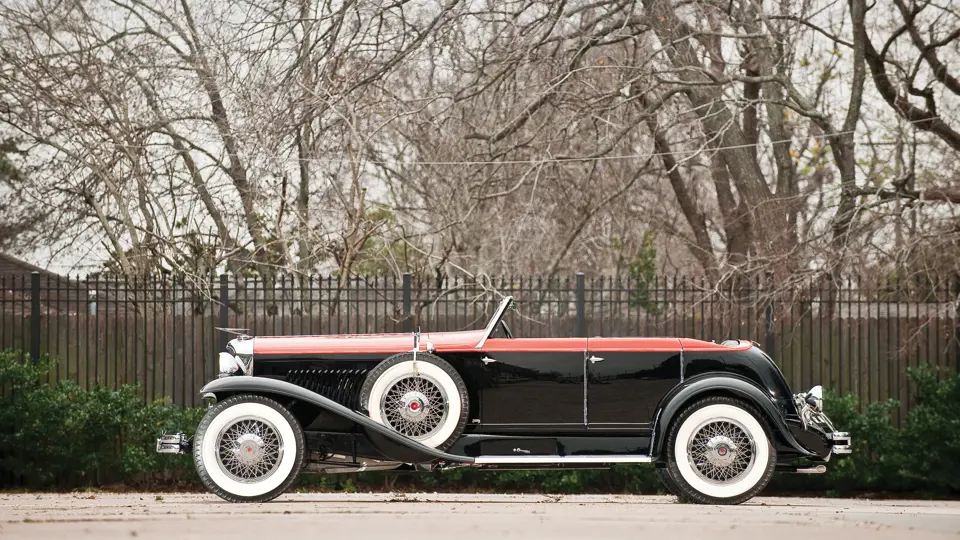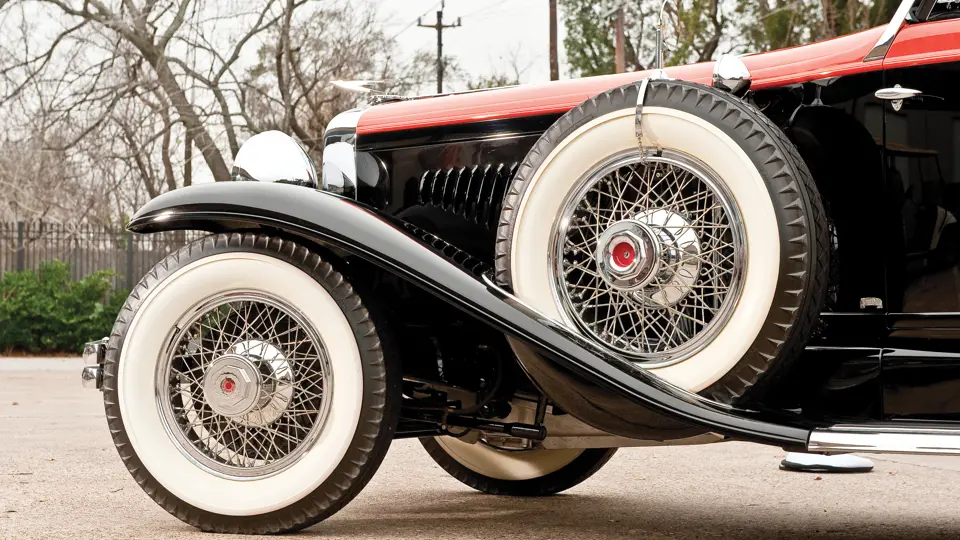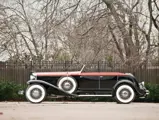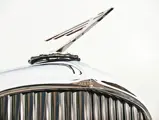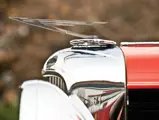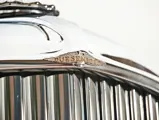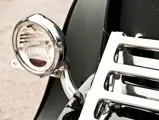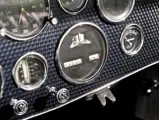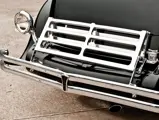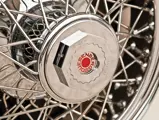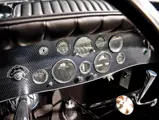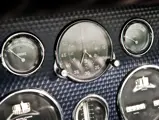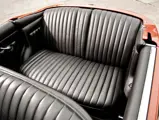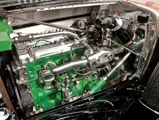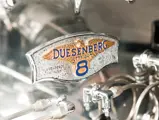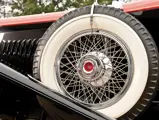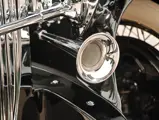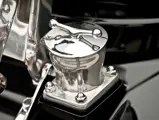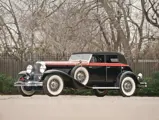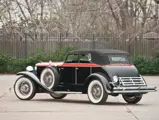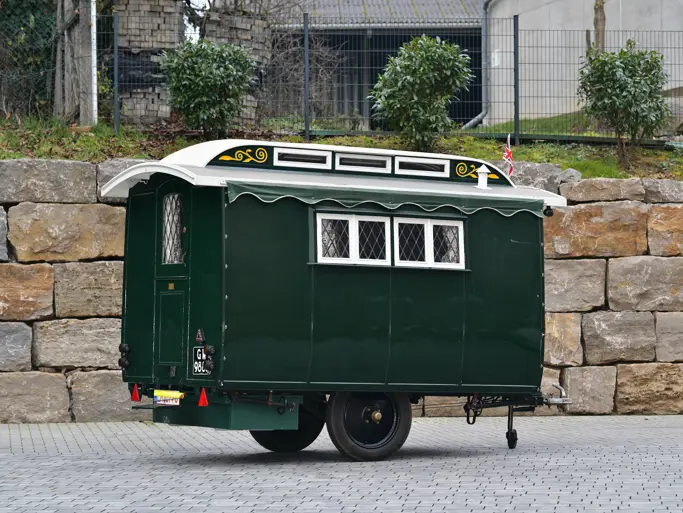265 hp, 420 cu. in. 32-valve, DOHC straight eight-cylinder engine, two-barrel updraft Stromberg carburetor, three-speed manual transmission, front and rear semi-elliptic leaf springs, rear live axle, four-wheel hydraulic drum brakes. Wheelbase: 142.5"
- Bought new by Frank W. Fuller of San Francisco
- One of three Brunn Riviera Phaetons built
- Recent restoration by Fran Roxas and Brian Joseph to its original configuration
By the time that the Model J Duesenberg was introduced at the New York Salon on December 1, 1928 – and trading stopped on the Stock Exchange for the announcement – the Duesenberg brothers had been making cars for 15 years.
Duesenberg was a force to reckon with at the Indy 500, placing 2nd in 1916, taking eight of the top places in 1922 and then introducing supercharging in 1924 and winning outright, achieved again in 1925 and 1927. Overseas, Jimmy Murphy had won the 1921 French Grand Prix in a Duesenberg, and from 1917-18 the company made Bugatti aero engines under license, which undoubtedly led to some interesting exchanges in ideas. In 1921 the Model A Duesenberg was introduced as the first production car with four-wheel hydraulic brakes, and 500 of these had been sold by the time the Model J was announced.
As such, it is no surprise the Duesenberg is considered the most exclusive American car of the classic era. It had the pedigree and was a doozy (or Duesie, if you like), as the slang goes. Simply put, it’s an American icon. When the Model J was launched, its 265-horsepower engine boasted almost 100 horsepower more than the Cadillac V-16’s 175 horsepower and a full 120 more horsepower than Packard’s 734 Speedster.
Small wonder the chassis alone cost $8,500, and completed cars with custom bodywork by Murphy, Rollston, Brunn, Bohman & Schwartz, Dietrich and Derham could top $20,000. It was after all the Roaring 20s – who knew the party would be over so soon?
Perhaps it was Erret Lobban Cord who provided the spark that inspired Fred Duesenberg to create the Model J, when he added Duesenberg to his automotive conglomerate. In 1924, at the age of 29, Cord had bought the ailing Auburn Automobile Co. in Auburn, Indiana. By repainting and otherwise brightening up the acres of stodgy sedans, coupes and convertibles, Auburn doubled sales inside a year. Cord’s banker friend Ralph Bard, who had taken a chance on him with Auburn, backed his effort to buy Duesenberg, and the deal was struck in October 1926.
Cord immediately freed up Fred Duesenberg from managing the factory and directed him to come up with a new model which would be the envy of every other manufacturer. Advanced plans were sent to coachbuilders in June 1928, and they were invited to submit a number of body styles that would be suitable for the new model. Early choices were a town cabriolet and two-window sedan by Holbrook, a phaeton and sedans by Derham, a town car by Rollston, a convertible sedan by Murphy and a phaeton by LeBaron.
In all, only 481 Model J chassis are estimated to have been built, though several had different bodies on them at different times, which is why more than 500 different cars have been photographed. Almost all were built in the initial order in 1929, because it soon became clear that the stock market was going to take a very long time to recover. The company would be selling those original chassis clear up to its eventual failure in 1938.
Duesenbergs were for the very rich – people who were untouched by the Depression. Such buyers continued to spend money like they had it, which they did. They included Howard Hughes, the Whitney and Vanderbilt families, movie stars like Gary Cooper and Clark Gable, director Howard Hawks and foreign royalty like King Carol of Romania, the Prince of Hyderabad and the Maharajah of Indore in India.
The car on offer here is s/n 2550, the second of three Riviera Phaetons by Brunn, which was originally fitted with engine number J521. It is the only one which was naturally aspirated, without supercharger, and it was bought new by San Francisco attorney Franklin W. Fuller, Jr. Built on the shorter 142.5-inch chassis, it has an ingenious disappearing top; the aluminum trunk opens downwards, the top folds in, and then the trunk can be closed.
Fuller kept the Phaeton until 1936, after which the next private owner was Homer Bigelow, also of New Mexico. During the war years, the car was in the hands of Don Ballard of California, until he sold it to Fred Cummins of Santa Fe, New Mexico in December of 1942.
The Brunn Phaeton’s next owner was Ted Hallerberg of Illinois, who is believed to have installed the engine from J440 – or at least the bellhousing and crankshaft. Frank Lloyd Wright’s son-in-law, William Wesley Peters of Spring Green, Wisconsin, then purchased the car from Hallerberg. It was Peters who had the car painted Taliesin Red.
The subsequent ownership history through to the present is well known and includes a full restoration in 1967 by Jim Aiken, who modernized the car slightly with skirted fenders and a trunk rack by Chris Bohman, formerly of Bohman & Schwartz. It was finished in a handsome two-tone brown with tan leather at the time.
Also of note, Walter Shearer acquired the car in 1971 and owned it for well over 20 years, into the 1990s. Since his ownership, the car was also in the noted Michigan-based collection of J. Peter Ministrelli, who had noted Duesenberg experts Brian Joseph and Fran Roxas restore the car in its present colors of black and orange with a black leather interior and removed the previous Bohman modifications.
Since its restoration in 2006, the Duesenberg continues to present very well. It offers the dual benefits of a weather-tight convertible sedan with the top raised and a very handsome close-coupled open Phaeton, for wine country tours and summer concours d’elegance. Its provenance is complete and well known, and its condition is of concours-quality throughout.
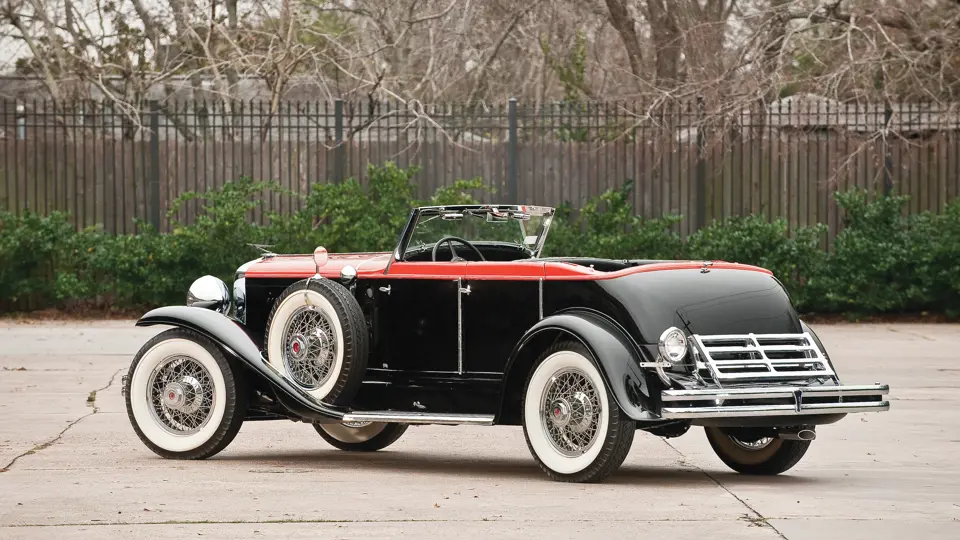



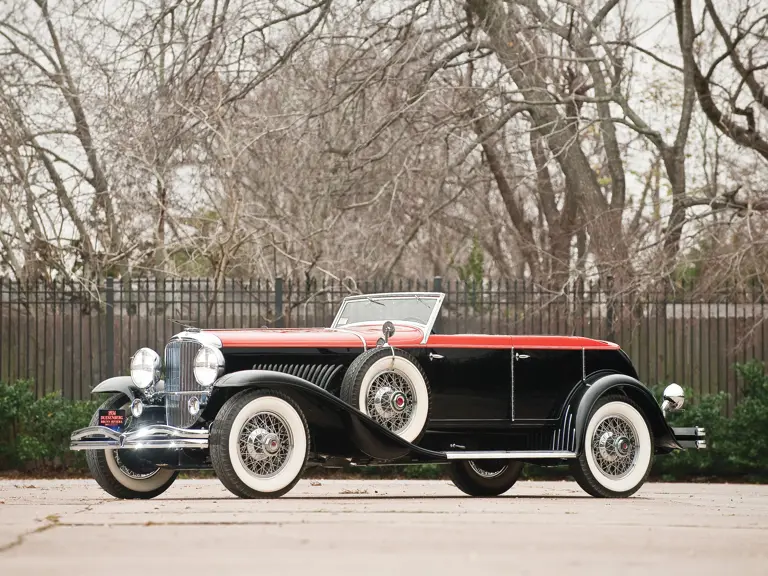



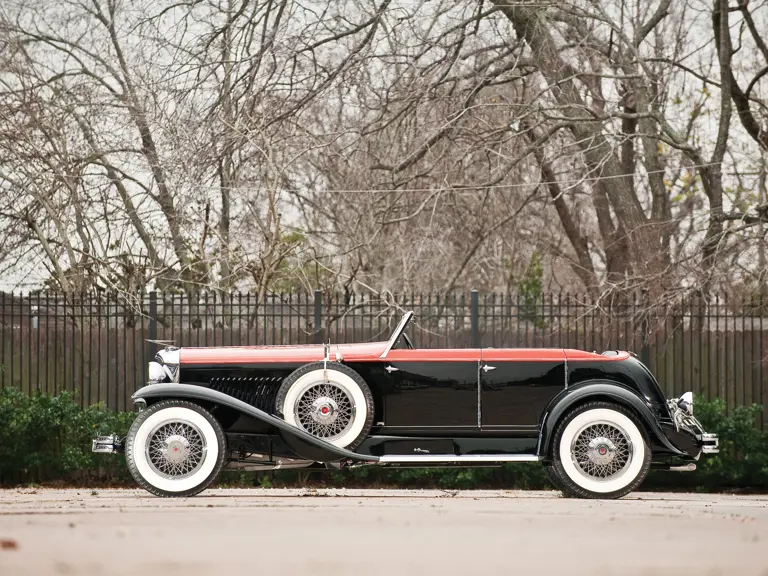
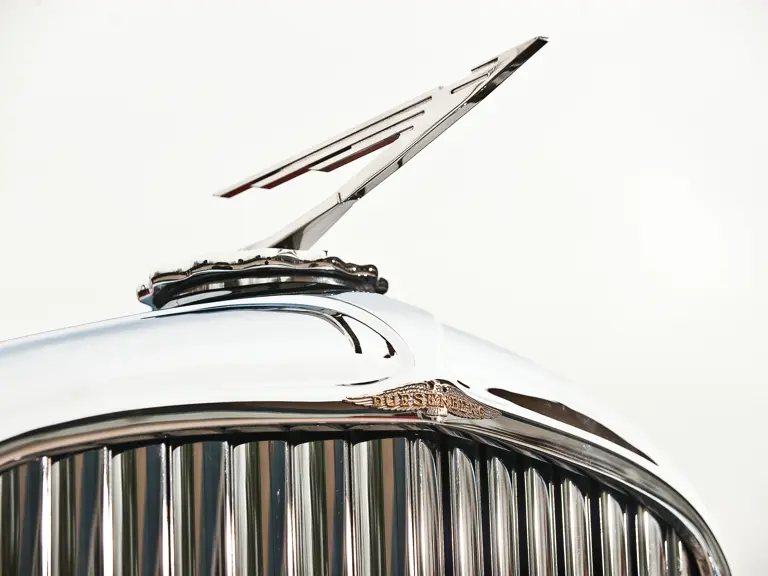

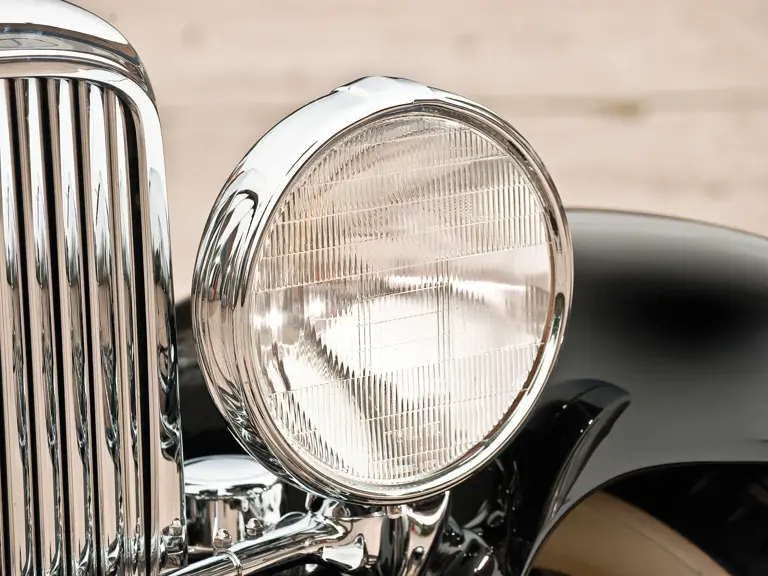


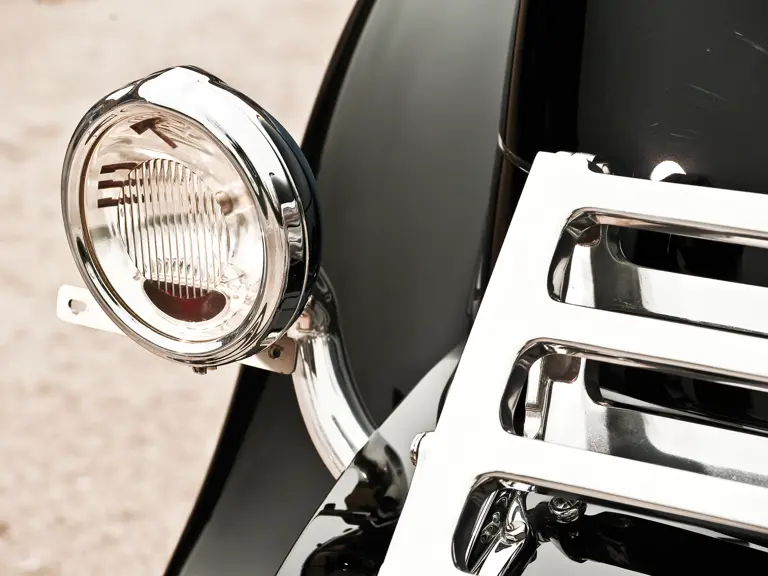





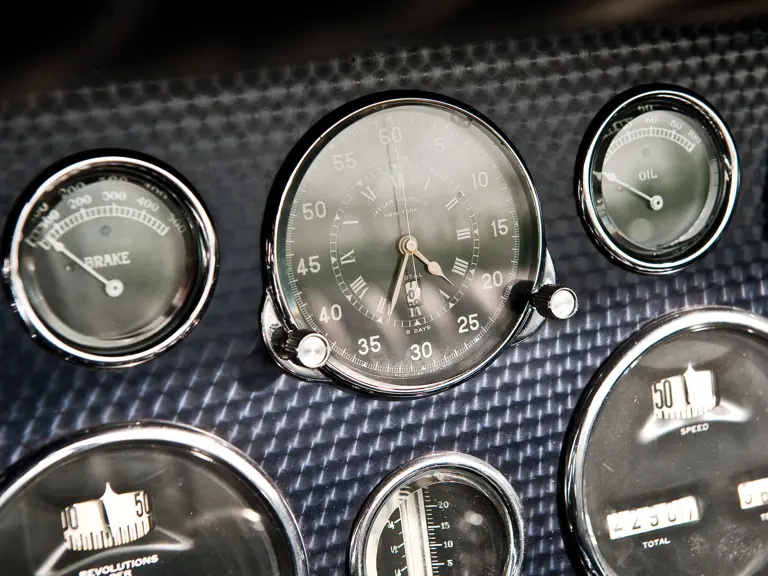

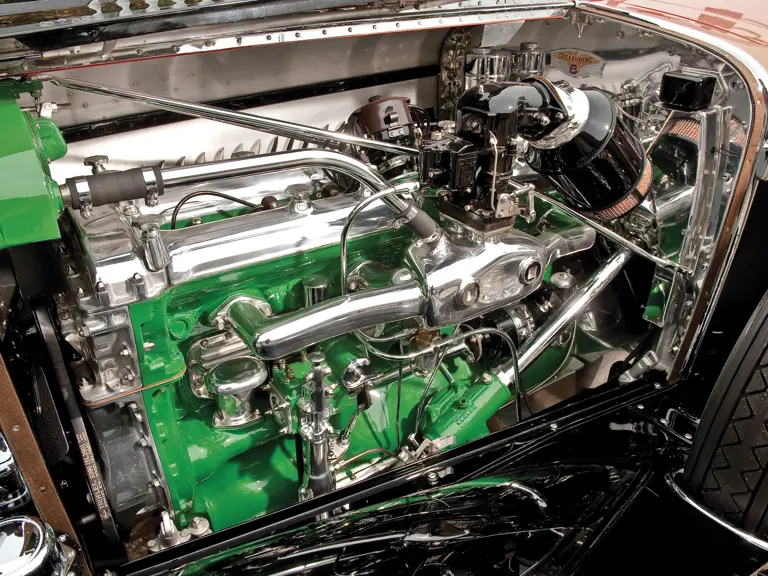


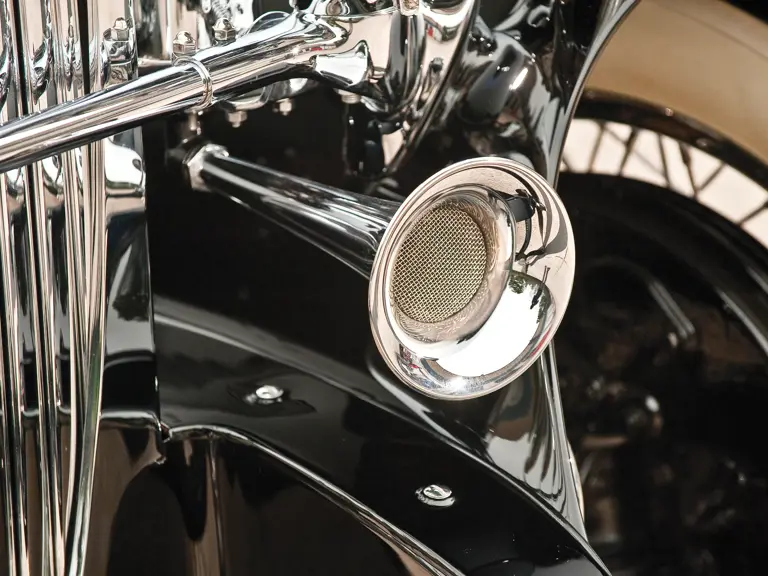
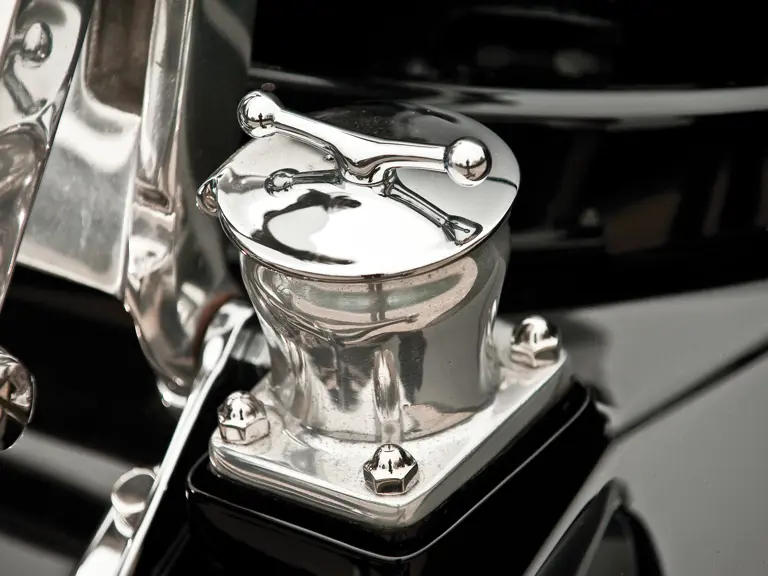
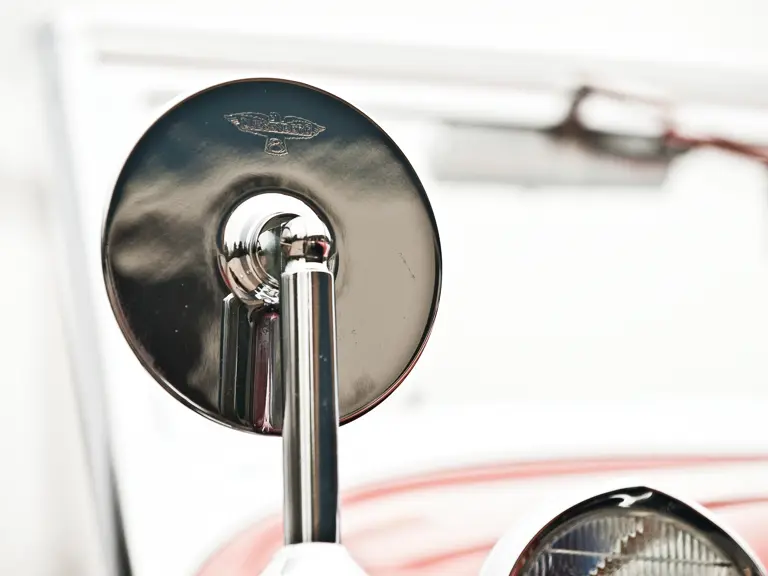


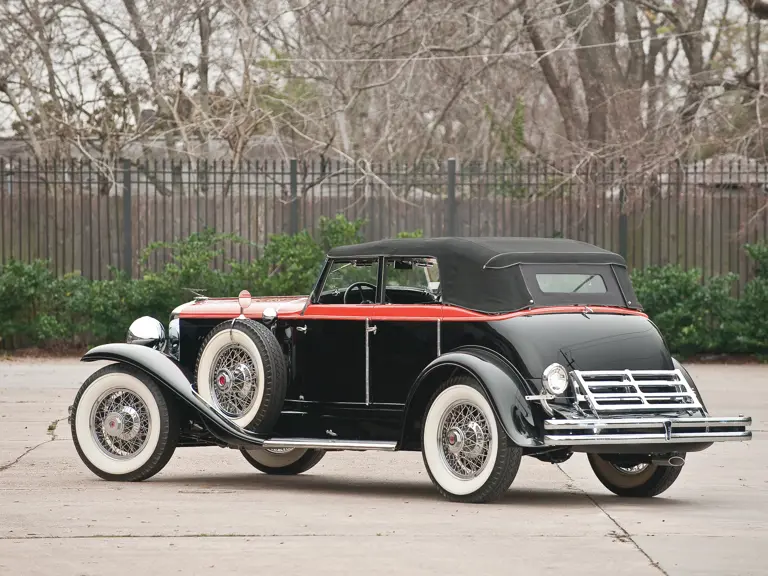

 | Monterey, California
| Monterey, California
